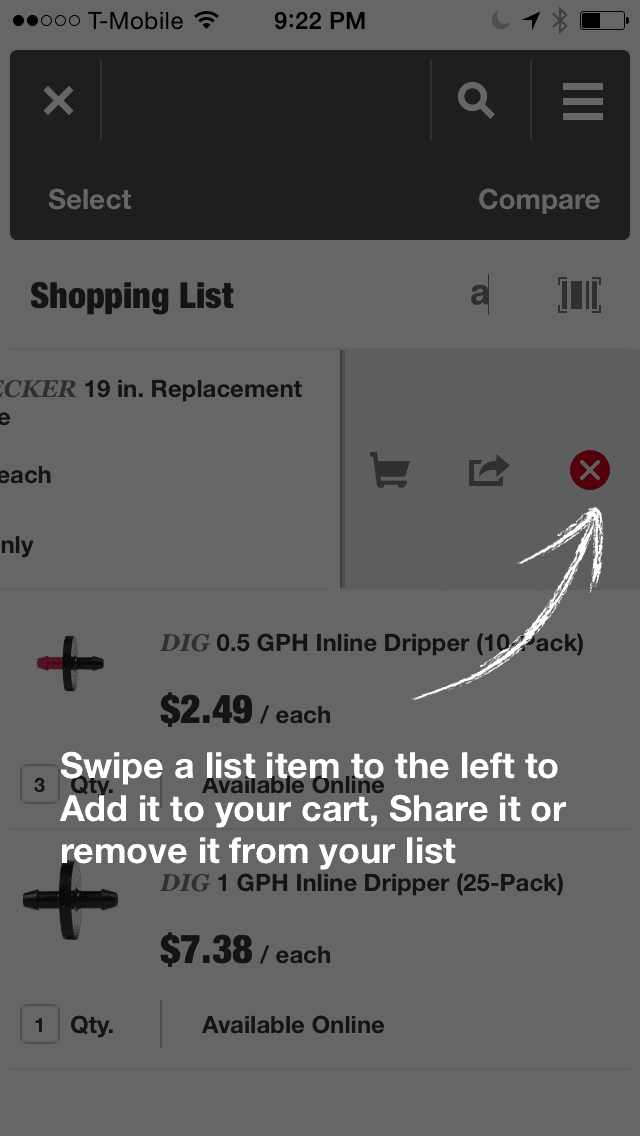Since this post was originally published, we have rebranded from IT Training Department to techstructional. You can read more about why we did that. Every mention of IT Training Department is now techstructional unless it doesn’t make sense contextually.
We’re kicking off the new techstructional website with a new blog post about our goal and where that goal came from. This is the birth of our blog and how it came to be.
You’ll find more than just that, though. I go over where I started and how I got into IT and technical training. It also covers the solutions we offer to solve corporate technical training problems and deliver a superior experience. I even break down some specific cases where I used these solutions and how they can simultaneously help the organization and employees.
This is just a kickoff. There will be much more to come, so make sure you return for more and maybe even subscribe to our newsletter. You can do that just to the right or at the bottom if you’re on a mobile device.

Introduction
First, I’ll introduce myself as I’ll be the main (if only) blogger here for a while until things get started. I’ve been an official instructional designer since about 2011, when I got my first strictly training-focused job as a multimedia technical curriculum developer. Before that, I did training-type things on the side, such as a job aid for teachers here and direct instruction there. That’s when I worked for a school district as a computer technician.
So, my job was to keep the technology at the schools running. That also involved answering the odd question here and there about how to do something. I also ventured into making documents that helped teachers do things and leaving documentation for the next person on the job (I wasn’t staying there forever!)
My undergraduate degree was in Internet Communication, a fancy way of saying web design. It did include a lot of other multimedia development, but that eventually led me to instructional design because my web design teacher got his graduate degree in instructional design (ID). That’s where I first learned what the heck an ID was!
That led me to combine my favorite thing (technology and computers) with my newfound career, instructional design. After I graduated from the MSIDT program at Fullerton State, I was off to the races to work as a multimedia technical curriculum developer at Robert Half.
I worked in the IT department there until they separated the staff development roles from IT, but I still served IT and helped everyone in the company use all the technology from the IT department.
Then I went on to work in the IT department at DaVita also doing similar work, helping teammates (they call them teammates, not employees) use the technology. How cool is that?
It turns out that when teammates did the training we developed, they could do their job better, were more confident when using the technology, and all around performed better.
So, training does help both teammates and the company!
That leads me to the goal of techstructional and where that goal comes from.
The Goal Of techstructional
At DaVita, I work in the IT Learning & Development department. That department is broken up between development and delivery; I do development. Delivery is extremely valuable and important, but they mostly focus on new facility launches and when business partners request virtual instructor-led training. It can be a great form of training, but, for the most part, it isn’t practical for technical training (why I don’t deal with ILT of any type) and requires more time for each person to participate in training.
The most effective and focused training for IT projects in DaVita has always come from development. That is the development of self-paced courses, performance support, videos, and more.
Those training methods have been a force to be reckoned with and have proven to be exceptionally effective. With great planning, teammates can get the same content in less than half the time of scheduled training. Not only that, but they can also go at their own pace and skip things they simply don’t need.
Techstructional aims to deliver those types of training resources to any organization that needs them. DaVita is a huge company and can afford a large training department that can make the entire company run more smoothly.
It’s an expensive investment, but it saves the company hundreds or millions of dollars annually. Not every company has the financial resources to hire a team of instructional designers, though.
That is until now.
With techstructional, every size company can tap into the resources of a real technical training department without hiring dozens of employees and all the overhead that comes with that. We specialize in developing effective digital training.
That means organizations can offer support to employees that help them work more effectively and give them more confidence to perform their jobs well. Not only that, but it does make people happy when their company invests in them with good training rather than a hastily thrown-together PowerPoint that is difficult to follow and overwhelming.
Nobody wants to or can quite honestly take an hour-long training and effectively learn enough. People have a limit to their cognitive load. Our goal is always to deliver just what employees need to get started and then develop the support they need to get their job done with corporate technology.
Our solutions are specific to each client’s needs but sometimes start with a self-paced course that’s no more than 30 minutes. We also offer performance support for those things that don’t need to be remembered to do the job successfully.
That’s our goal! But where did it come from!?
Where The Goal Came From
The goal for techstructional came from three places.
- The observation that employees appreciate and do better when they’re properly trained.
- Organizations with enough money benefit a great deal from a training department.
- Most employees (even younger generations) are still uncomfortable with technology without a helping hand.
We want to ensure that our goal of making organizations’ technology projects run smoother is available to everyone. That’s why we started techstructional.
What I Developed
I mentioned that in DaVita’s IT L&D, they have both development and delivery. Delivery is vital, and sometimes, in-person or real-time virtual instruction is important. That’s not what techstructional specializes in or what we find the most effective for technical training.
Learning technology is pretty hands-on. That means performing tasks yourself with hand-holding or following a resource that steps employees through it. That’s exactly what we develop, and I’ll walk you through how that will help your IT project deployments.
Custom Courses
You might hear this called self-paced courses or even eLearning (or maybe e-Learning or however you want to spell it). These courses allow employees to start whenever they like and learn at their own pace. They can even start and stop during the course until they’re complete.
Of course, the goal is always to have them complete it all in one go but at their speed. That means it needs to be short enough for them to do that. That’s why our goal for the length of any single course is always no more than 30 minutes. It’s even better if we can make it around 15 minutes!
When we develop a custom course for IT projects, it’s also important to have employees do the process in a practice environment. That means we recreate the task inside the course and walk them through the best software scenario to succeed in a safe environment.
It’s almost like they’re doing it themselves in an environment where they can’t break anything, and with the guidance they need to feel comfortable doing the task.
Pretty cool, right?
Performance Support
To make a course short and to the point, it needs to be extremely focused with just the required information to get started. The goal of a course is never to make an expert. That either comes in later courses or through performance support that helps employees perform specific tasks and learn while doing.
I love performance support, it’s one of my favorite ways of learning software because it’s typically easier to follow than videos and I get complete guidance through the task.
Here’s a great example of how a course can be combined with performance support to give employees proper support. I built a course that showed me how to use new timeclock software. Ideally, that software would show me exactly what I needed to get started and nothing more.
It would first start with letting me choose how I clock in. It’s either on a computer, through an iPad, or a wall clock. Then I learned how to clock in. That’s the one task I need to know how to do and all the steps I need to do that. I don’t request time off daily, so that’s overkill, right? I won’t even remember by the time I request time off!
So, the course only shows me the need to know, nothing more, and makes sure I know the task instructions available through performance and where to find them. Then, performance support gets me the rest of the way when I need it. That means I will need a job aid about requesting time off and perhaps one about fixing incorrect punches.
Depending on the project, there could be a lot more performance support, but those are the most common for using time clock software. A quick reference guide is another great type of performance support. It can help employees understand the most important things you can do with software.
Training Videos
No matter the topic, videos are a popular way to learn new things, even if they’re not always the best. That goes for things in IT, too. A good way to support employees with videos is to develop a short video on a specific task, similar to paper-based performance support.
IT help desks get a lot of calls. Sometimes there are recurring questions that help desks get. Those common problems are a great candidate for reducing help desk calls by developing short videos that help employees answer the questions for themselves.
Watching a quick video reduces calls to the help desk and helps employees get an answer a lot faster as long as they know where to look. At Rober Half, I developed a series of training videos specifically geared toward answering common questions the help desk received. They used those videos to quickly answer employee questions and reduce calls.
Contextual Help
I’m sure you’ve seen contextual help when downloading a new application. If not, check out some examples of contextual help. They walk you through the main parts of the app and what you can do right when you install it. That’s a helpful way to teach people how to use the app and make sure they stick around a bit longer.
If people are more confident and educated about a tool, they’re more likely to use it!
It could be a simple modal window that walks you through steps or an overlay that points out important aspects of your app. Many years ago I put together a Pinterest board with different examples of what I called mobile help overlays. This is one small aspect of contextual help, but it gives you an idea of what I’m talking about.
Something like this.

Complete guides and videos in an application can be even more helpful. That’s what I’ve been developing using Pendo. I use it daily to provide alerts, surface important information quickly, and even walk people through specific tasks.
Wrap Up
There will be a lot more to come on the techstructional’s blog. I previously wrote about many learning & development topics on my personal website, but you may notice the writing tapered off. That’s because I was working on other projects.
Because I love helping organizations do better with training, I’m focusing on this and will continue to do so. My goal is to help companies introduce technology better with superior technical training that makes employees happier and work more efficiently.
Imagine that! Employees who feel supported and have proper training perform better and are happier at work. Now that’s a novel concept!
Schedule a free consultation to discuss your corporate technical training project with me if you’d like.
